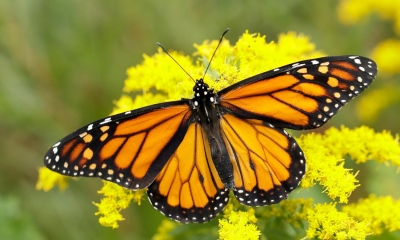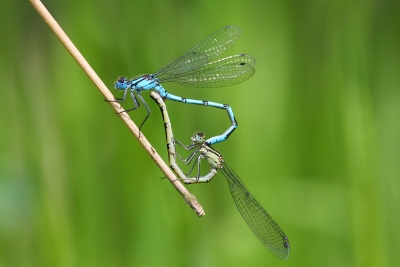What is monarch butterfly?

Monarch butterflies embark on a marvelous migratory phenomenon. They travel between 1,200 and 2,800 miles or more from the United States and Canada to central Mexican forests. There the butterflies hibernate in the mountain forests, where a less extreme climate provides them a better chance to survive.
Monarch caterpillars are striped with yellow, black, and white bands, and reach lengths of two inches (five centimeters) before metamorphosis. They have a set of antennae-like tentacles at each end of their body. The monarch chrysalis, where the caterpillar undergoes metamorphosis into the winged adult butterfly, is a beautiful seafoam green with tiny yellow spots along its edge.
Whether monarchs are present in a given area within their range depends on the time of year. They are one of the few migratory insects, traveling great distances between summer breeding habitat and winter habitat where they spend several months inactive. In the summer they range as far north as southern Canada. In the fall the eastern population migrates to the cool, high mountains of central Mexico and the western population migrates to coastal California, where they spend the entire winter.
The monarch population has declined by approximately 90 percent since the 1990s. Monarchs face habitat loss and fragmentation in the United States and Mexico. For example, over 90 percent of the grassland ecosystems along the eastern monarch’s central migratory flyway corridor have been lost, converted to intensive agriculture or urban development. Pesticides are also a danger. Herbicides kill both native nectar plants where adult monarchs feed, as well as the milkweed their caterpillars need as host plants. Insecticides kill the monarchs themselves. Climate change alters the timing of migration as well as weather patterns, posing a risk to monarchs during migration and while overwintering. The U.S. Fish & Wildlife Service is currently reviewing the species’ status.
Picture Credit : Google
